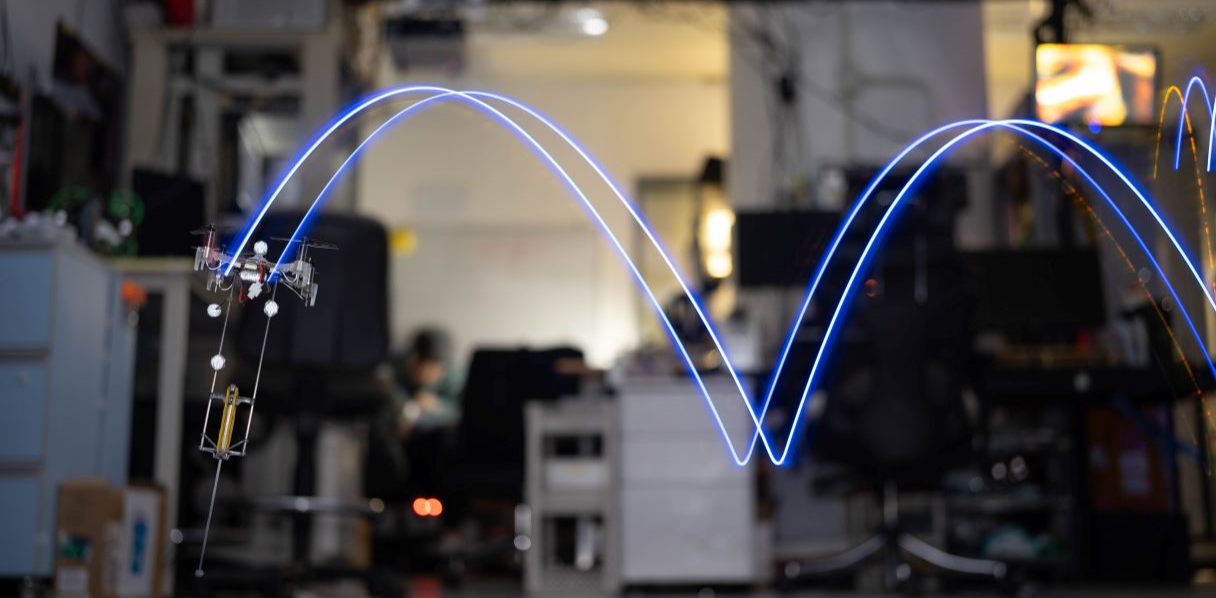How a Bionic Leg is Revolutionizing Drone Navigation and Efficiency


Imagine a drone that’s taken a few too many sips from the cup of creativity and decided, “Why just fly when you can hop?” This isn’t your average buzzing quadcopter; it’s more like if Inspector Gadget and a kangaroo had a tech baby. With a telescopic leg that pops out like a jack-in-the-box on a pogo stick, this drone hops around like a hyperactive pinball, making the Energizer Bunny look downright lazy.
It’s not just hopping mad; it’s hopping smart! Meet Hopcopter, the brainchild of engineers from City University of Hong Kong and Hong Kong University of Science and Technology. While Hopcopter’s motion may appear unconventional and even whimsical for a drone, we can find abundant examples of such movement in nature.
Many organisms in the natural world achieve versatile movement through the integration of jumping and flying behaviors. Tree-dwelling birds like parrots and sparrows exhibit remarkable agility by combining jumping between branches with intermittent flight during foraging. Certain species of solitary birds engage in ritualistic display jumps during the breeding season to advertise their health and defend their territory to potential mates. Insects such as locusts, tree crickets, and fleas integrate jumping and flying behaviors to navigate complex environments and evade predators. Flying squirrels and draco lizards also employ a combination of jumping and gliding to achieve impressive distances.
These examples showcase the potential benefits of mixed jumping-flying movements in enhancing maneuverability, agility, efficiency, and versatility. These engineers want their drone to do exactly the same. By attaching a spring-loaded telescopic leg to the underside of a quadcopter, they built a small prototype weighing 35 grams and studied how the robot jumps.
Using what they learned, they created a jumping controller for the robot. In experiments, the robot successfully followed a planned path while jumping, proving that its jumping abilities are similar to a theoretical limit. It outperformed other advanced jumping robots, including Salto-1P. The robot’s intermittent jumping also allowed it to accelerate quickly and make sharp turns. This diverse range of movements means the robot can work well in different environments, like indoors or outdoors with rough terrain. To help the robot jump steadily using only its own sensors, they added special stabilizers. These stabilizers made sure the robot stayed balanced during jumps, without needing external feedback or visual guidance.

The robot achieved a maximum speed of 2.38 m/s when jumping to a height of 1.63 m, surpassing the agility of other reported jumping robots. Hopcopter demonstrated impressive jumping heights ranging from 0.6 meters to 1.6 meters during experiments, showcasing its strong jumping capabilities. Compared to rotorcraft, bipedal flying robots, and legged robots, the jumping mechanism requires less energy for movement. This significant improvement in power efficiency and durability translates into practical advantages for jump-copters, especially in terms of mission duration and range. Similar to perching, the longer operational time allows the robot to stay active for extended periods, which is valuable in scenarios requiring continuous monitoring, inspection, or exploration. Furthermore, improved durability can extend the robot’s travel distance and expand its operating range, as demonstrated by other ground-based robotic flyers.
Crucially, the passive leg design of Hopcopter can easily be applied to conventional rotorcraft. By adding elastic legs and controlling the variations, a standard quadcopter can transform into a jumping robot, unlocking synergistic hybrid motions. For instance, payloads that are too heavy for continuous flight can still be transported through a series of jumps. Hopcopter represents a platform that demonstrates the benefits of integrating flight and jumping capabilities.
Get ready for a hopping party that’s about to get even bigger! Don’t be surprised if more drones start joining in on the fun.
https://www.youtube.com/watch?v=Qjcz2P3MtUk





.jpg?fit=300%2C169&ssl=1)